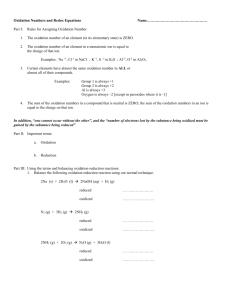


Imagine that we could react nitrogen gas and oxygen gas together in an oxidation reaction to produce new compounds which are oxides of nitrogen. Note that the compound, Mg 2+O 2- or MgO, has no overall net charge because the number of positive charges is equal to the number of negative charges in the compound.īut what happens if our oxygen atom encounters another atom that is not capable of pulling the electrons off the oxygen atom? Together they make up the compound magnesium oxide in which the ratio of Mg 2+ to O 2- is 1:1 so the compound can be represented as Mg 2+O 2- but is usually given as a "molecular" formula, MgO.

If we react oxygen gas and magnesium metal together in an oxidation reaction then the oxygen atom pulls off 2 of the magnesium atom's electrons forming the magnesium ion, Mg 2+, and the oxide ion, O 2. This happens when our oxygen atom ecounters an atom that is much, much less electronegative (that is, an atom that is more electropositive), such as an atom of magnesium, Mg. If the oxygen atom gains 2 electrons it forms an oxide ion, O 2-, with a charge of 2- (charge number is 2-). It has a strong tendency to pull 2 electrons towards itself in order to complete its octet of electrons (it is said to be electronegative). No ads = no money for us = no free stuff for you! What is an Oxidation Number?īefore we consider what an oxidation number is, it is worth recalling what an ion is, and what a charge number is.Ĭonsider an atom of oxygen, O, which has 6 valence electrons. An oxidation number, or oxidation state, is assigned to help us determine whether or not an element in a reaction has been oxidised or reduced.Unless stated otherwise, assume that all the atoms of the same element in a molecular formula have the same oxidation number.(b) For a charged molecule (a polyatomic ion), the sum of the oxidation numbers for each atom of each element in the ion equals the charge on the ion (the ion's charge number). (a) For a compound or molecule with no overall net charge (5), the sum of the oxidation numbers for each atom of each element in the molecule equals 0. The oxidation numbers of other elements in compounds can be calculated using the overall charge on the compound: ⚛ in O 2F 2 the oxidation number of oxygen is I or +1 ⚛ in OF 2 the oxidation number of oxygen is II or +2 These elements and their oxidation numbers are listed below: When found in compounds, the oxidation state of some elements are always the same (with a few exceptions) so their oxidation numbers will always be the same. The oxidation number for the ion of an element is equal to the charge on the ion (its charge number). The oxidation number of the atoms making up an element in the free state, including its standard state (3), is 0.


 0 kommentar(er)
0 kommentar(er)
